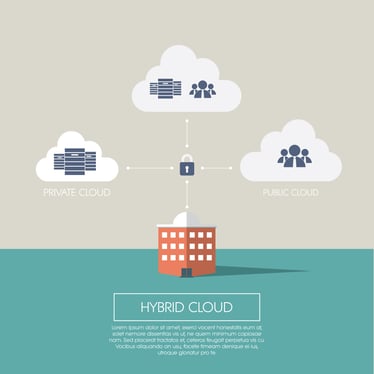 Your company’s massive volumes of data require cloud computing. Cloud offers more security to your data more than your on-premise server would. However, even though it provides terrific protection, it doesn’t do so once your data interacts with other systems.
Your company’s massive volumes of data require cloud computing. Cloud offers more security to your data more than your on-premise server would. However, even though it provides terrific protection, it doesn’t do so once your data interacts with other systems.
With this existing gap, cyber terrorists, rogue countries, and identity thieves are constantly developing ways of getting between the cloud and your company. Consider tightening your network security nuts to ensure your data is safe and secure. Read on to find out how network security has evolved and how you can improve it in the cloud-based era.
Evolution of Network Security
To succeed in building adequate network security for your company, you must first understand how it has evolved over the years. Technology started to grow back in the 1990s when companies came up with new ways of using technology, both internally and externally. Internally, it was used to run the daily operations in email systems and human resource management, while externally, it was used in websites.
All the technology needs were acquired by buying information technology from vendors like IBM, Hewlett Packard, Dell, and Cisco, among others. The vendors provided tailor-made IT for each company to meet their specific needs. Thus, the network security systems that companies needed were based on vendor-specific technology. Employees who knew how specific vendors handled the security were tasked with overseeing it.
Today, cloud computing has significantly changed the IT sector. Companies are shedding off the old and in-house technology, and sending their sensitive data to the secure cloud. The use of cloud computing has changed the fundamental elements of network security.
Where Things are Heading
The changes in IT have called hackers into the action of developing new hacking tricks. You need to up your game to counterattack their efforts if you are to protect your systems and data. Below are some of the initiatives that hackers are deploying that could change the way you secure your network.
- Self-Propagating Malware is Being Developed
Earlier, malware needed some action from a user to spread like clicking a link or opening attachments. Things have, however, changed; new malware that doesn’t need humans to spread and that propagates at astonishing speeds are being developed. Some examples of these self-propagating malware include crypto worms and ransomware.
- Hackers are Stepping Up their Evasion Abilities
Sandboxes have been effective in detecting hacking and malware in systems for a long time now. However, hackers are stepping up their game to counter the sandboxes by developing malware that is hard to find. Some of the techniques that they are using include using encrypted traffic and using cloud services to command and control, making it hard to find them using security tools.
- Ransomware is Involving More than Money

In recent years, hackers have been using ransomware to compel you to pay a few bucks so that your website can be restored. This trick has been changing in recent years, as the primary goal of hackers has been scaled up to destroying essential data and systems. Your company is, therefore, facing threats of becoming obsolete due to the loss of essential data, and that is why upscaling your network security is essential.
How to Improve Cloud Computing Security
Bad guys are undeniably getting smarter, creating severe damage, and in possession of sophisticated hacking tools on their hands. The big question now is what you need to do to protect your business from their wrath. Below are three ways to improve your network security.
1. Implement Segmentation
Your company’s network security will get breached at least once in the future. Your challenge should, therefore, narrow down to minimizing the blast when that happens. Segmentation of areas that your employees can access limits the breach damage to a small area that you can quickly rectify.
2. Extend the Cloud’s Security
Network security teams only concentrate on monitoring the safety of the data traffic and leave out the cloud. However, the cloud can also be hacked if its security is not airtight. Doing occasional cloud audits will ensure that all the services happening there are known.
3. Incorporate Machine Learning-Based Tools
Machine learning-based tools can notice anomalies faster than humans, which explains why hackers use it. When you incorporate them in your network security, they can sift through large volumes of data and find the small anomalies. The use of machine learning-based tools will help you to arrest the situation before it blows off.
Cloud computing is, without a doubt, a cost effective and secure option of protecting your data. The best way to ensure that your company implements cloud network security is by hiring cloud computing experts to design an effective strategy. Investing in a good cloud network security will give you a return on investment.










